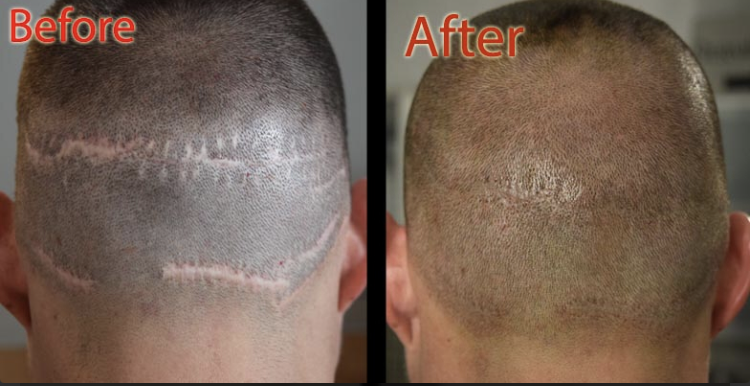Thinning hair is a common problem for men and women. In some men, hair loss may start around 20 years of age, though, for a majority of men, extreme hair thinning starts by age 50. As far as hair thinning is concerned, women struggle with it too. Is SMP for long thinning hair a better option than a hair transplant?
SMP for Long Thinning Hair
Also known as cosmetic hair follicle replication, SMP involves the process of depositing micro dots of specialized pigment into the skin patches in the scalp that once had hair. The goal of treatment is to create the look of thicker, denser hair so that the bald patches can be covered. SMP creates the look of a shaved head. For a person with hair thinning, SMP can turn out to be one of the best non-invasive ways to create the appearance of denser hair follicles and improve the look of the hair. This can give them a confidence boost and improve their self-esteem.
SMP uses semi-permanent pigment placed with tiny, hair-like precision on the scalp. The non-surgical hair restoration technique uses specialized tools to deposit micro size dots of ink on the client’s scalp that matches with their natural hair color and creates the illusion of hair growth. SMP for thinning hair is a painless procedure that requires little maintenance and is relatively affordable compared to other hair loss treatment techniques. It is a great hair restoration solution for busy professionals for its little maintenance and natural appearance.
Long thinning hair is a problem
The procedure can camouflage hair thinning by filling the gaps with pigmented dots. Whether you’re going bald or have thinning hair, hair tattoos can be blended with the remaining hair. The goal of SMP is to give you the look of natural hair so nobody is able to find out that you’re experiencing hair loss. The best thing about SMP for long thinning hair is that it looks natural and seamlessly blends with natural hair. It masks and hides thinning hair and makes hair look thicker and fuller.
SMP for Thinning Hair in Women
Women may experience hair thinning for numerous reasons. It could be due to hormonal imbalance, dieting, nutritional deficiency, stress, environmental factors, or medical condition. SMP looks promising and has become a popular choice. SMP matches tiny scalp tattoos with natural hair of women for that realistic look. The procedure aims to create the look of lush, thick hair without any obvious signs of thinning. For women, scalp micropigmentation has turned out to be a blessing in disguise, especially as they can feel as glamorous as they want to without worrying about hair thinning.
Will SMP for Thinning Hair Damage Existing Hair?
No, scalp micropigmentation does not cause any damage to hair or hair follicles. Your hair continues to grow at its pace even after you undergo SMP for long thinning hair.
However, you want to choose the best SMP professional in Scottsdale, who is a master of the craft and has experience under his belt. His SMP skills can be a game-changer. If you are looking for a reliable and reputable Scottsdale SMP technician, schedule a consultation with DermiMatch Clinic experts. They are the best in the business.










